Real eState
Rocky View County's explosive growth continues – Real Estate News EXchange

A 1.23-million-square-foot Lowe’s Canada distribution centre is the latest massive industrial/logistics development in Rocky View County, just north of Calgary. (Courtesy Lowe’s Canada)
The recent announcement of a 1.23-million-square-foot Lowe’s Canada distribution centre in Balzac is the latest example of how the area just outside Calgary has become a magnet for huge commercial real estate developments and job growth.
Despite its already explosive growth over the past decade, the area in Rocky View County is poised for more development.
“We estimate half of the land in East Balzac has been developed to date,” David Kalinchuk, the economic development manager of Rocky View County, told RENX. “This leaves plenty of room, nearly 2,400 acres, for more commercial and industrial development in this booming part of Rocky View County.
“When it comes to attracting new tax base growth, Rocky View County has so many things going for it. The county has become Western Canada’s centre for warehousing and logistics. Rocky View is set to buck the national trend of an economic slowdown from COVID-19 and chronic low oil prices.
“Jobs are being created, new industries are being built and the Alberta economy is being diversified in a very tangible way in Rocky View County.”
Many attractions to Rocky View County
The East Balzac area is easily accessible from the Queen Elizabeth II Highway which cuts north to south through Calgary. To the north is Edmonton, while the route opens up Southern Alberta and the United States to the south.
The Stoney Trail highway offers access from east to west.
Developers are attracted to the area because of the availability of large tracts of land.
And, of course, cost is top of mind. Land is cheaper than in the City of Calgary. The county also offers lower overall business operating costs than its more urban neighbour.
The combination is resulting in an unprecedented commercial real estate boom in the region.
Annual growth averages 9.5 per cent
Kalinchuk said commercial and industrial growth in Rocky View County averages 9.5 per cent per year. That’s like a municipality attracting a world-class, once-in-a-lifetime development . . . every year.
The county’s best year-over-year gain in assessment value was $144,217,700 in 2018. However, 2019 was also a banner year with $82,114,070 added to the commercial and industrial assessment total.


David Kalinchuk, the economic development manager of Rocky View County. (Courtesy Rocky View County)
“Total commercial and industrial growth in East Balzac in 2019 stood at $1,680,775,070, approximately one-third of the non-residential assessment base in Rocky View,” Kalinchuk said. “According to Alberta Municipal Affairs, Rocky View’s total non-residential assessment base was $5,190,534,040.
“This means Rocky View’s 2019 tax ratio stood at 72 per cent residential to 28 per cent non-residential (72/28). The county’s target ratio is an ambitious 65/35. We are well on our way to attracting this level of new commercial and industrial growth.”
In 2014, the total assessment was about $1 billion.
Growth accelerates since 2009
Balzac was basically gopher pasture as recently as 2005, with the exception of the Nexen Gas Plant.
The majority of that massive growth has occurred since about 2009. It’s not limited just to industrial and logistics. Other major projects have included the CrossIron Mills shopping centre, the New Horizon Mall and the Century Casino and Racetrack.
One of the key developers in the market is Highfield Investment Group. It has partnered with Lowe’s Canada for the new $120-million distribution centre.
The building will be located in the High Plains Industrial Park and is scheduled to open in the fall of 2021.
“We have been extremely successful at High Plains over the past 18 months, during which time we have secured over two million square feet of park tenants including Rona / Lowe’s Canada for 1.2 million square feet, CHEP Canada for 150,000 square feet, Home Depot for 418,000 square feet as well as numerous regional businesses who prefer to own their facilities,” said Adrian Munro, president of Highfield Investment Group.
“To underscore our bullishness in our park and the distribution sector, we are also nearing completion on the construction of a new 409,000-square-foot speculative distribution building. Given the size of this facility, in a less busy time (it) would constitute a story on its own.”
High Plains offers options for virtually any size of business, Munro added. It can accommodate million-square-foot tenants “as well as smaller businesses requiring sites as small as five acres.
“Our ability to deliver highly efficient distribution centres as well as compelling economic savings, when compared to the Calgary markets, places High Plains at centre ice of the Calgary industrial market.”
80 per cent of region’s industrial absorption
Kalinchuk, citing data compiled by veteran Alberta commercial real estate expert Kit Rowley, said the total built-out space in Balzac is close to 9.5 million square feet. The Lowe’s project will push it well beyond 10 million square feet.
A very conservative estimate is the total number of jobs today in Balzac is 90,000.
Iain Ferguson, executive vice-president of commercial real estate firm CBRE, said Rocky View County since 2015 has attracted over seven million square feet of distribution centre / e-commerce fulfillment centre tenants.
That represents about 80 per cent of the overall absorption in the Calgary market for tenants over 150,000 square feet, during the past five years.
“The locational decisions for these large-scale facilities are driven by transportation efficiencies, the labour force, and the cost of occupancy,” said Ferguson.
“The RVC area offers excellent highway access and proximity to the CN and CP intermodal yards, an abundant and quality labour force, and competitive rent when compared to the City of Calgary.”
Real eState
Judge Approves $418 Million Settlement That Will Change Real Estate Commissions
|
|


A settlement that will rewrite the way many real estate agents are paid in the United States has received preliminary approval from a federal judge.
On Tuesday morning, Judge Stephen R. Bough, a United States district judge, signed off on an agreement between the National Association of Realtors and home sellers who sued the real estate trade group over its longstanding rules on commissions to agents that they say forced them to pay excessive fees.
The agreement is still subject to a hearing for final court approval, which is expected to be held on Nov. 22. But that hearing is largely a formality, and Judge Bough’s action in U.S. District Court for the Western District of Missouri now paves the way for N.A.R. to begin implementing the sweeping rule changes required by the deal. The changes will likely go into full effect among brokerages across the country by Sept. 16.
N.A.R., in a statement from spokesman Mantill Williams, welcomed the settlement’s preliminary approval.
“It has always been N.A.R.’s goal to resolve this litigation in a way that preserves consumer choice and protects our members to the greatest extent possible,” he said in an email. “There are strong grounds for the court to approve this settlement because it is in the best interests of all parties and class members.”
N.A.R. reached the agreement in March to settle the lawsuit, and a series of similar claims, by making the changes and paying $418 million in damages. Months earlier, in October, a jury had reached a verdict that would have required the organization to pay at least $1.8 billion in damages, agreeing with homeowners who argued that N.A.R.’s rules on agent commissions forced them to pay excessive fees when they sold their property.
The group, which is based in Chicago and has 1.5 million members, has wielded immense influence over the real estate industry for more than a century. But home sellers in Missouri, whose lawsuit against N.A.R. and several brokerages was followed by multiple copycat claims, successfully argued that the group’s rule that a seller’s agent must make an offer of commission to a buyer’s agent led to inflated fees, and that another rule requiring agents to list homes on databases controlled by N.A.R. affiliates stifled competition.
By mandating that commission be split between agents for the seller and buyer, N.A.R., and brokerages who required their agents to be members of N.A.R., violated antitrust laws, according to the lawsuits. Such rules led to an industrywide standard commission that hovers near 6 percent, the lawsuits said. Now, agents will be essentially blocked from making those commission offers, a shift that will, some industry analysts say, lower commissions across the board and eventually force down home prices as a result.
Real estate agents are bracing for pain.
“We are concerned for buyers and potentially how we will get paid for working with buyers moving forward,” said Karen Pagel Guerndt, a Realtor in Duluth, Minn. “There’s a lot of ambiguity.”
The preliminary approval of the settlement comes as the Justice Department reopens its own investigation into the trade group. Earlier this month, the U.S. Court of Appeals for the District of Columbia overturned a lower-court ruling from 2023 that had quashed the Justice Department’s request for information from N.A.R. about broker commissions and how real estate listings are marketed. They now have the green light to scrutinize those fees and other N.A.R. rules that have long confounded consumers.
“This is the first step in bringing about the long awaited change,” said Michael Ketchmark, the lawyer who represented the home sellers in the main lawsuit. “Later this summer, N.A.R. will begin changing the way that homes are bought and sold in our country and this will eventually lead to billions of dollars and savings for homeowners.”
Under the settlement, homeowners who sold homes in the last seven years could be eligible for a small piece of a consolidated class-action payout. Depending on how many homeowners file claims by the deadline of May 9, 2025, that could mean tens of millions of Americans.





Real eState
Two matching megacomplexes to totally transform Toronto neighbourhood
|
|
A pair of twinned proposals aim to completely redefine the skyline of Toronto’s midtown area with an architectural statement that would set the neighbourhood apart from other high-rise clusters in the city.
Two separate proposals from developer Madison Group at 110 and 150 Eglinton Avenue East have been resubmitted to city planners, calling for two pairs of mixed-use condominium towers with standout designs unlike anything that exists in the city today.
In a surprising twist from a developer not exactly known for breaking the bank on architecture, the proposals now boast brand-new complementary designs from acclaimed firm Rafael Viñoly Architects.
The 110 Eglinton site, currently home to a pair of mid-rise office buildings, would be demolished and built out with two 58-storey towers.
A few doors to the east, the 150 Eglinton site includes a handful of mid-rise and low-rise commercial buildings along Eglinton, wrapping around Redpath Avenue. These buildings would also be demolished and replaced with a pair of 61-storey towers.
All four towers will feature matching designs boasting red aluminum cladding forming vertical piers that accentuate the towers’ heights, though there will be some key differences between the pairs at 110 and 150 Eglinton.
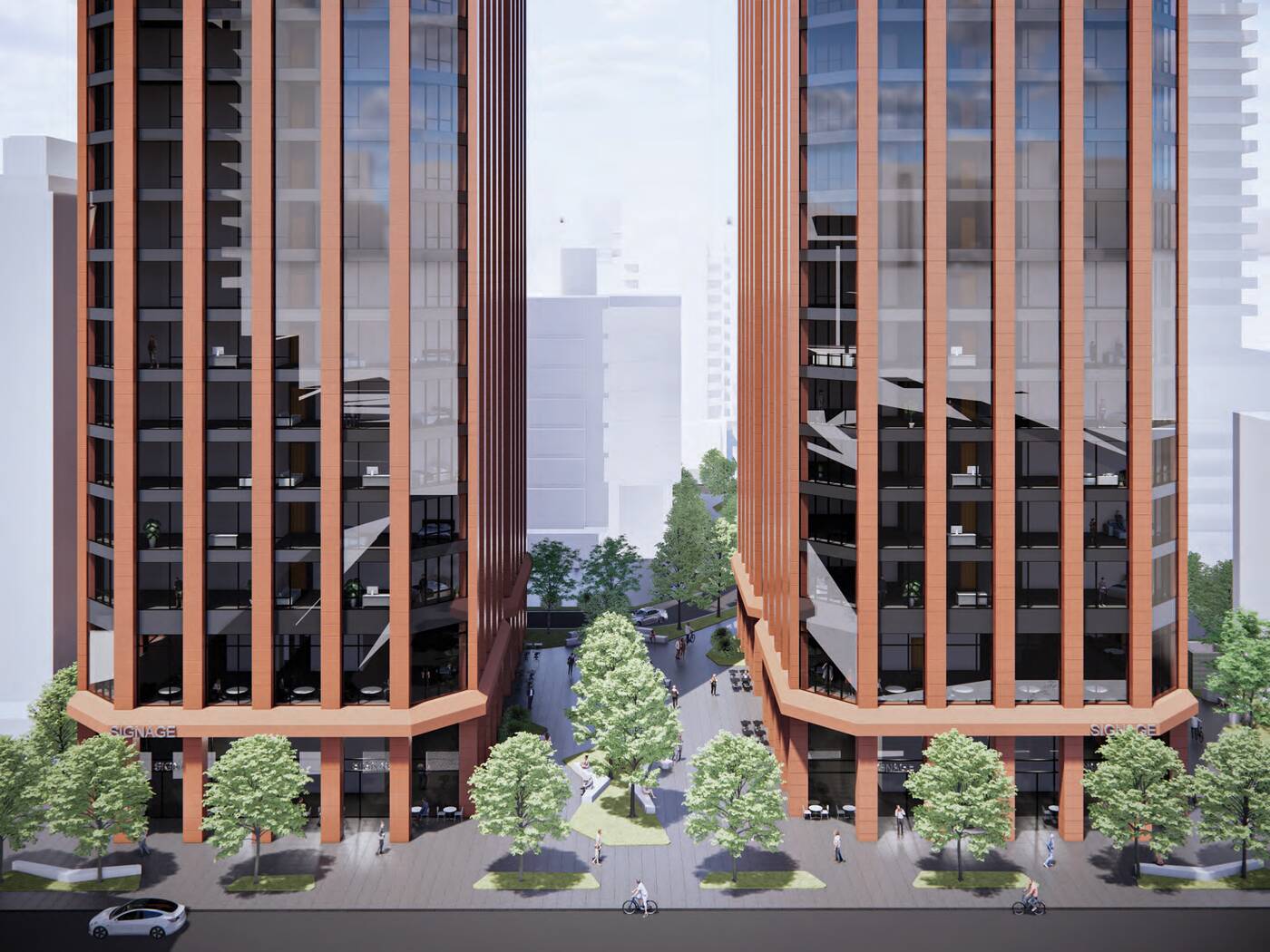

150 Eglinton East
The 58-storey towers at 110 Eglinton East will be linked via an enormous floating bridge spanning levels five through 10, framing a large open public space below and supporting an elevated residential amenity floor above.
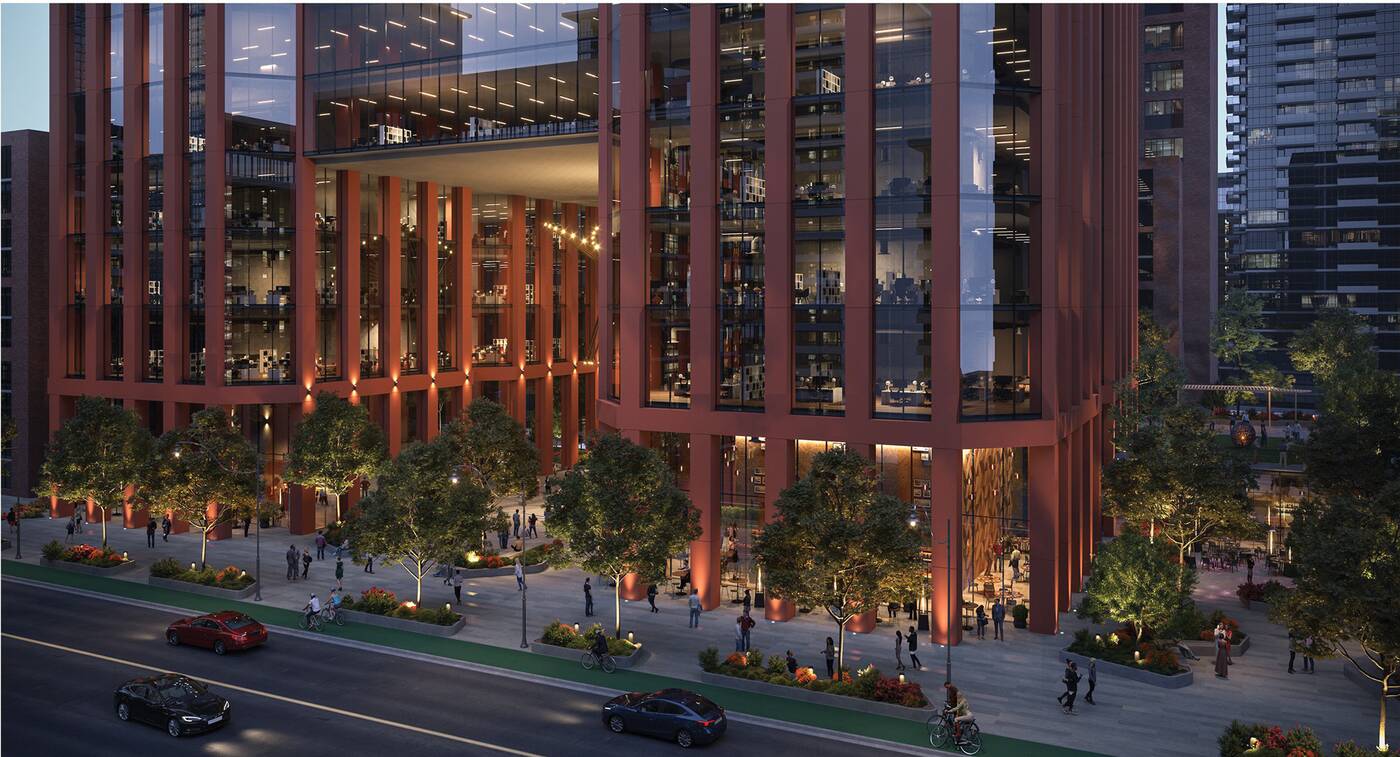

The 61-storey towers lack a skybridge, but will also feature amenity levels with panoramic views, including spaces on the 28th and 40th floors.
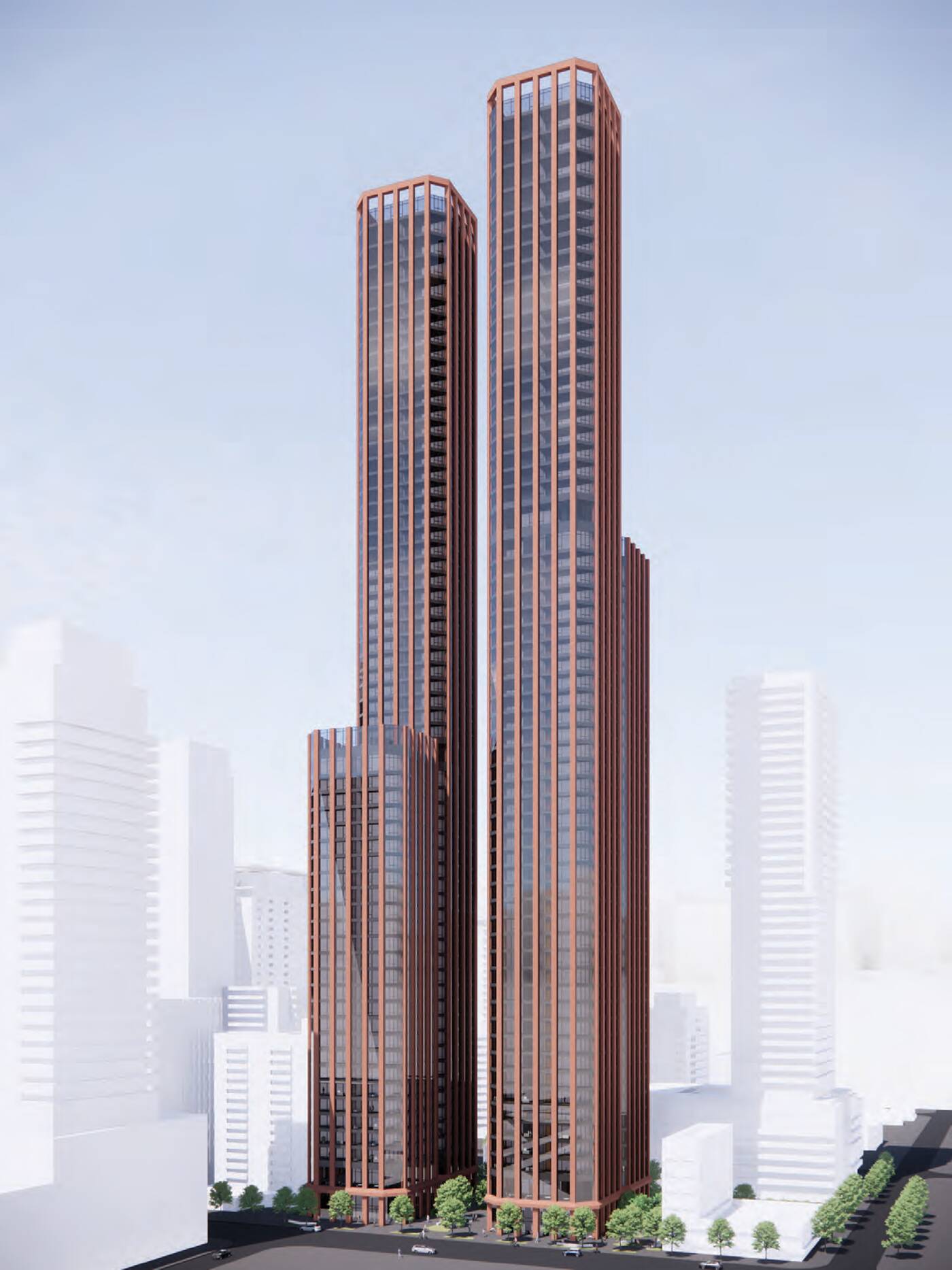

At heights of just over 236 metres, these four towers all stand taller than anything that exists in the neighbourhood as of 2024.
The combined proposals would add a staggering 3,364 condominium units to the neighbourhood, along with new retail and office space to maintain employment uses along this evolving corridor.
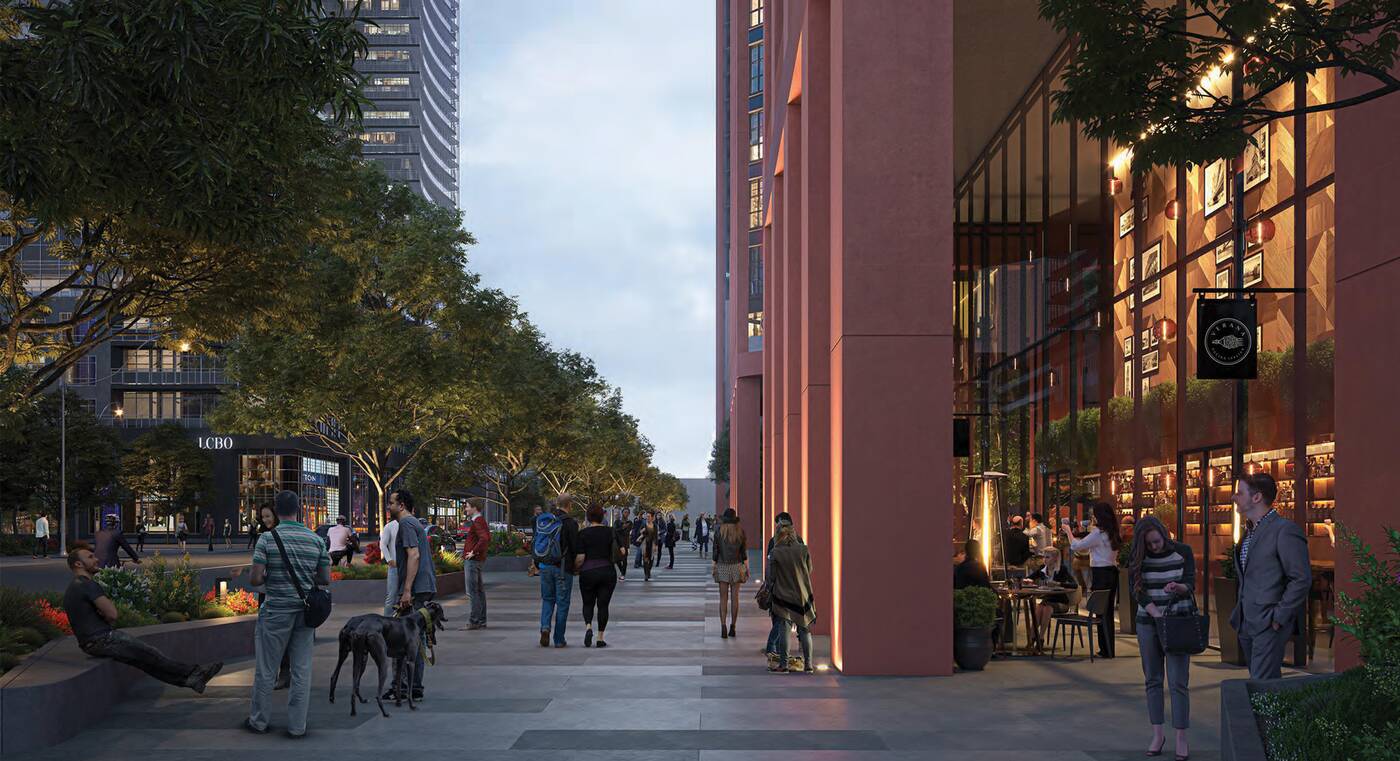

One standout of the proposals is a series of privately-owned publicly accessible spaces measuring over 5,000 square metres across the combined sites.
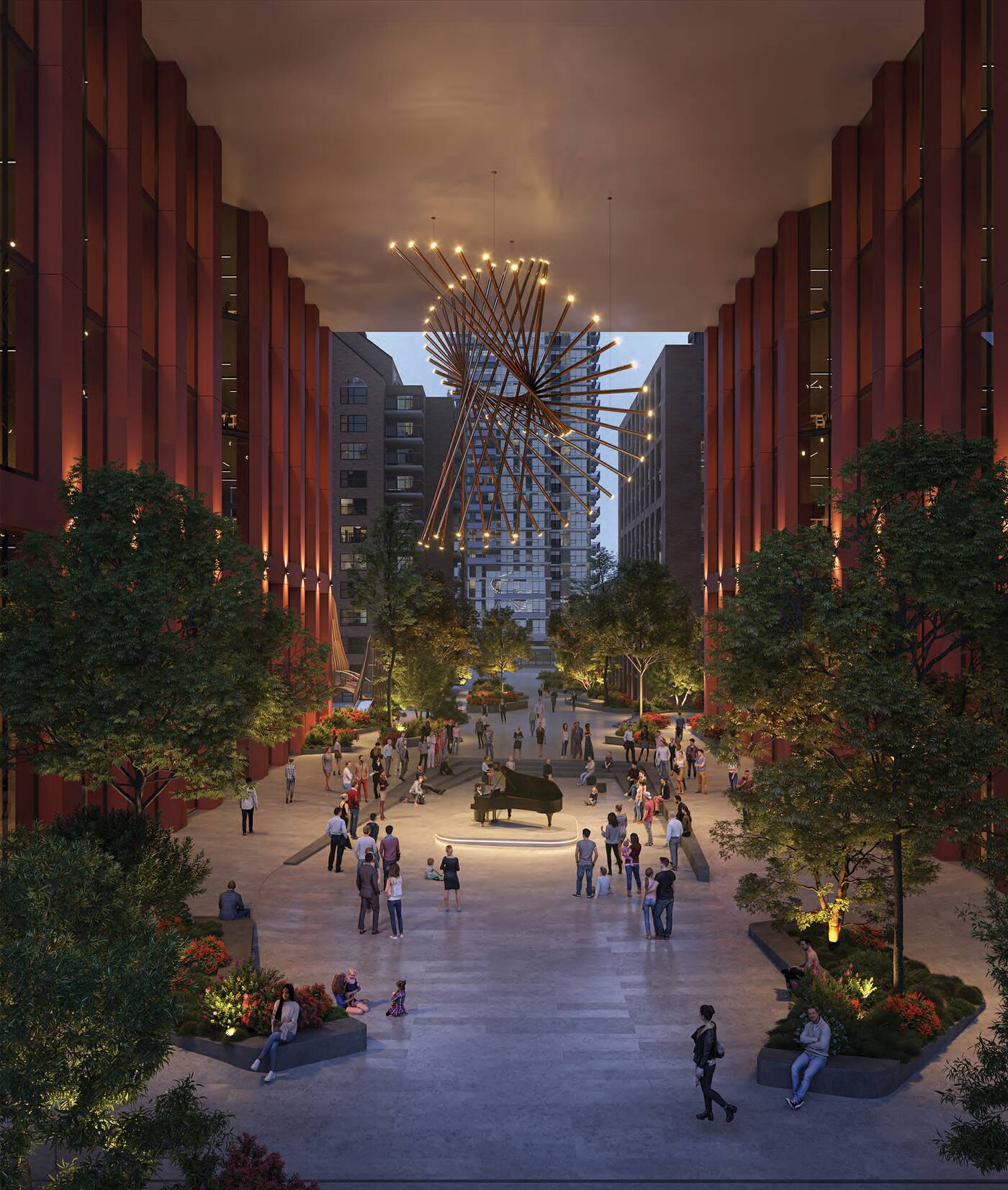

Among the publicly-accessible spaces proposed are the aforementioned area below the bridge at 110 Eglinton, along with pedestrian walkways that will allow foot traffic to filter through the block between Eglinton and Roehampton Avenue to the north.
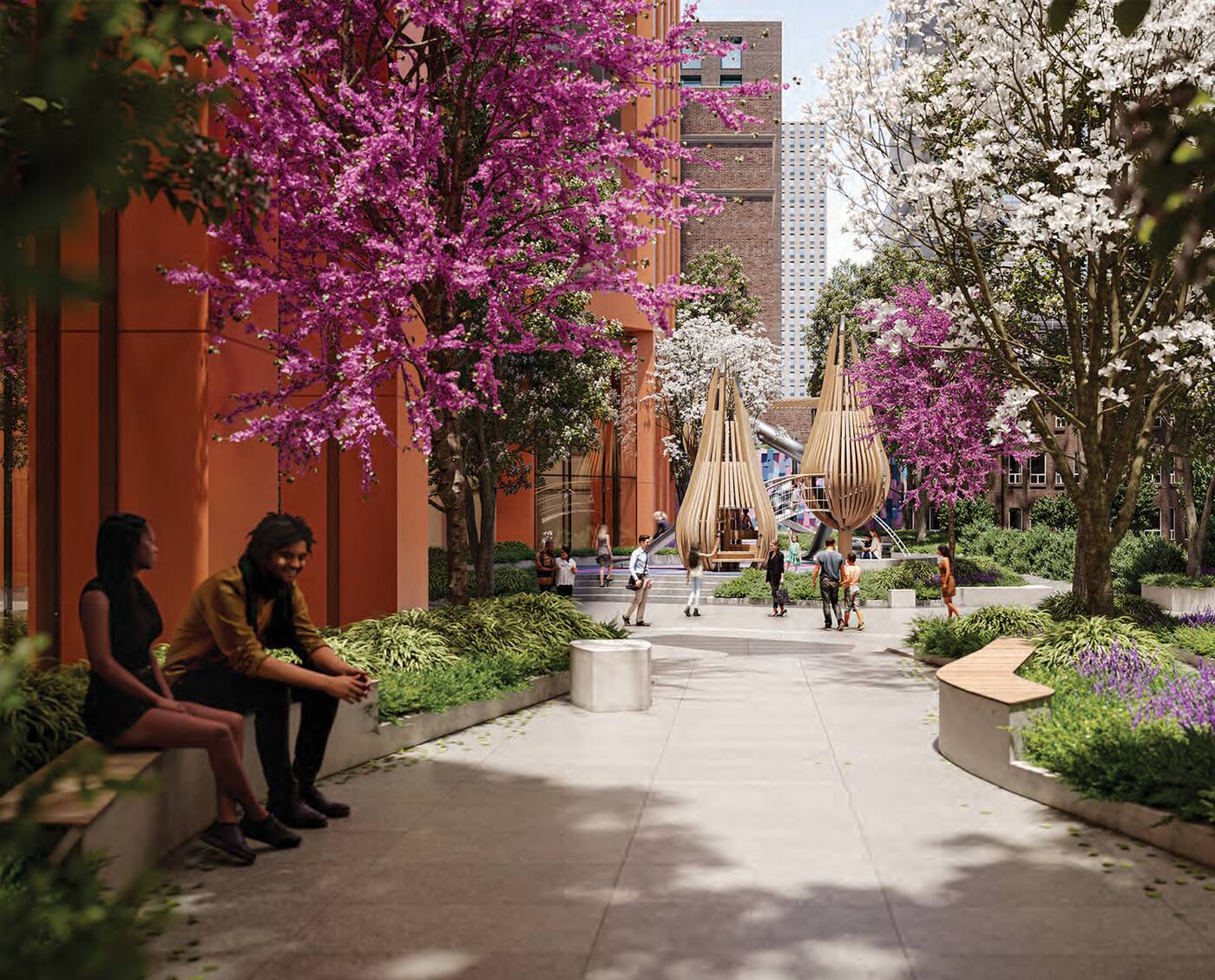

It’s the type of proposal one would expect to be met with significant local backlash. However, early feedback from the neighbourhood is surprisingly positive.
Local city councillor Josh Matlow took to X to voice his support for the project, calling it “genuinely exciting.”
“The architecture is beautifully designed,” said Matlow, hyping up locals with a promise that renderings of the new public space would wow the community. It’s remarkable for our community and city — like bringing Rockefeller Center to midtown Toronto,” said Matlow.





Real eState
This Toronto home is a ’90s decor trip but a steal at only $600K
|
|
If you’re a millennial and grew up in the ’90s, you’ll probably remember a fair amount of ’90s home decor trends that might still haunt you to this day.
There were sponge-painted walls, all-beige everything, wallpaper borders, oak cabinets, carpets in places where there shouldn’t be carpets, bedroom sets from big-box stores, Southwestern or Tuscan decor in homes that weren’t in Arizona or Italy, and the list goes on.
We thought we’d left those troubling times in the past, but 39 Hatherley Rd. really brings back all those memories.
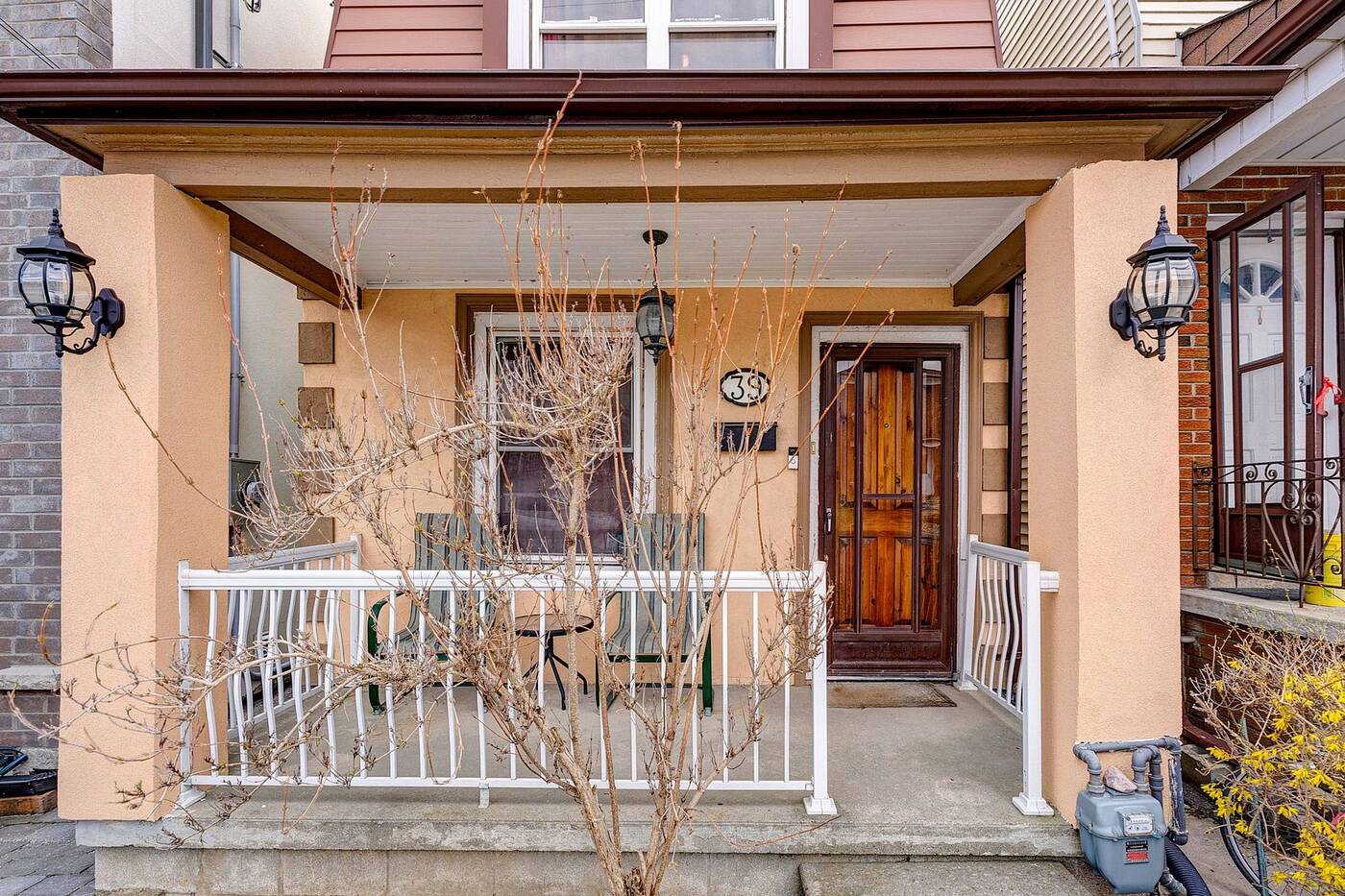

The front porch.
Somehow this two-bedroom, one-bathroom house hit almost every ’90s trend, except for carpets in the bathroom (phew!).
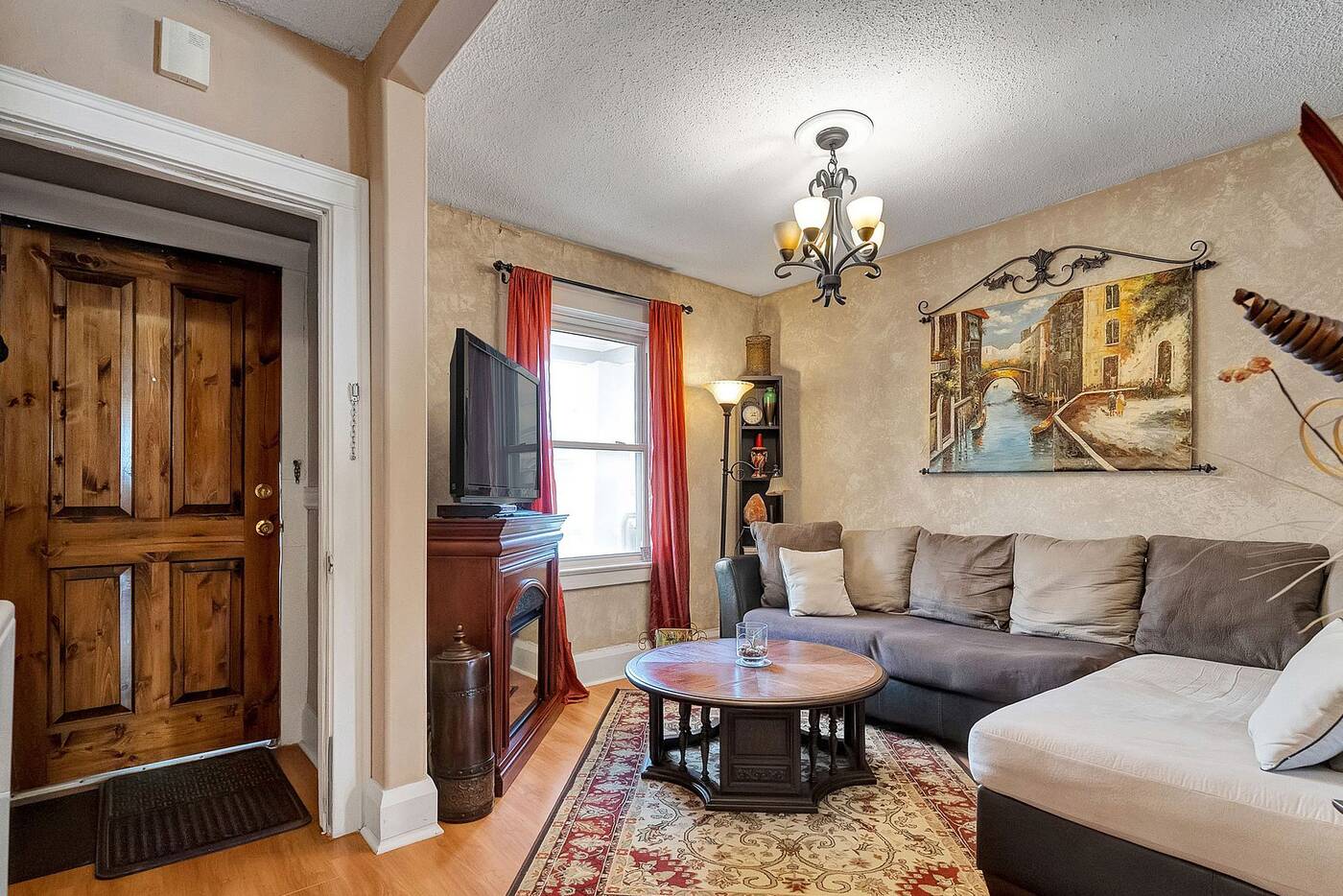

The entryway.
What’s weird is this house has changed ownership a few times since the 90s. In fact, it was most recently purchased in 2010 for $250,000.
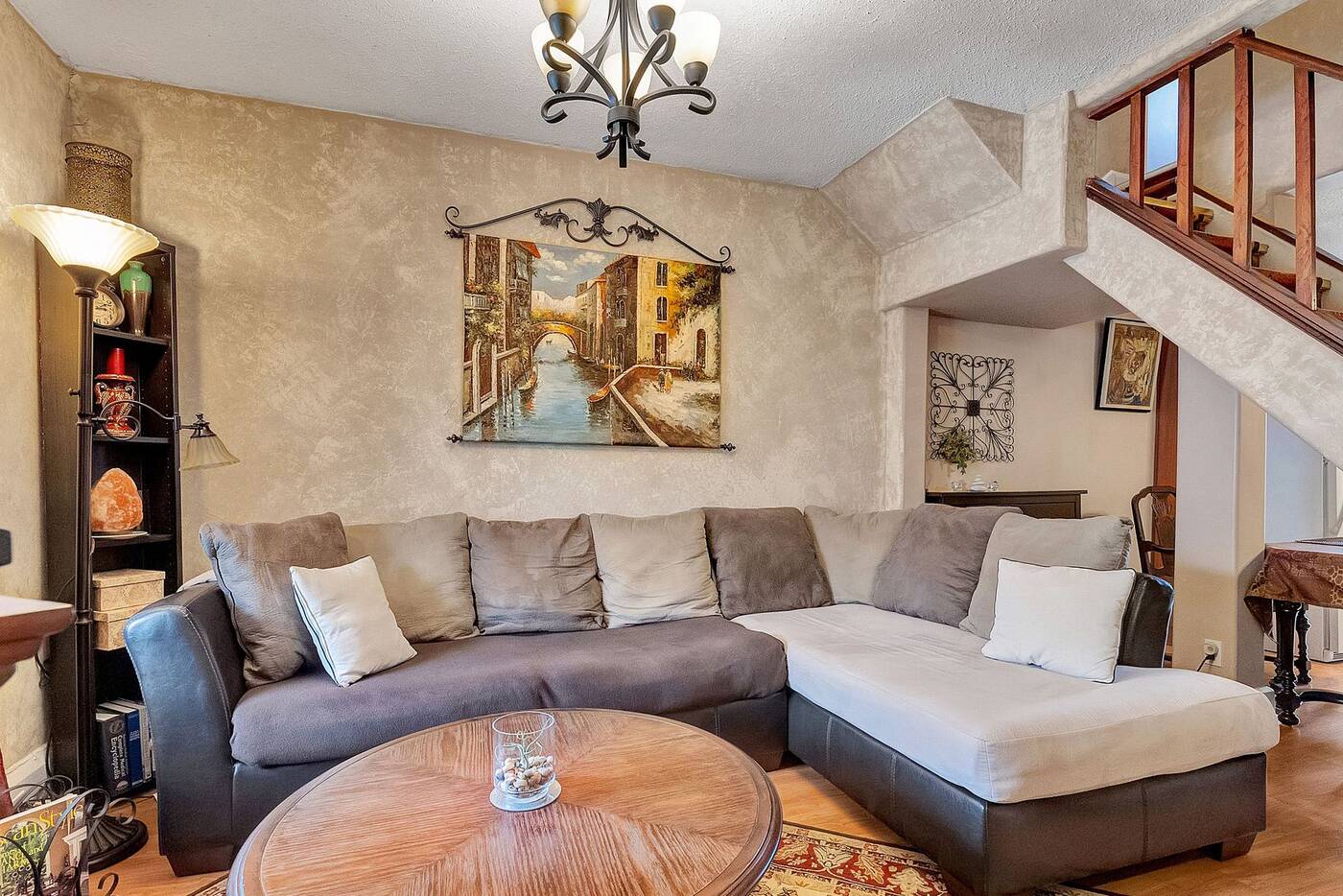

The living room.
So it’s somewhat surprising that when you look at past listing photos, almost nothing has changed. In fact, it seems they added the sponge-painted walls in 2010.
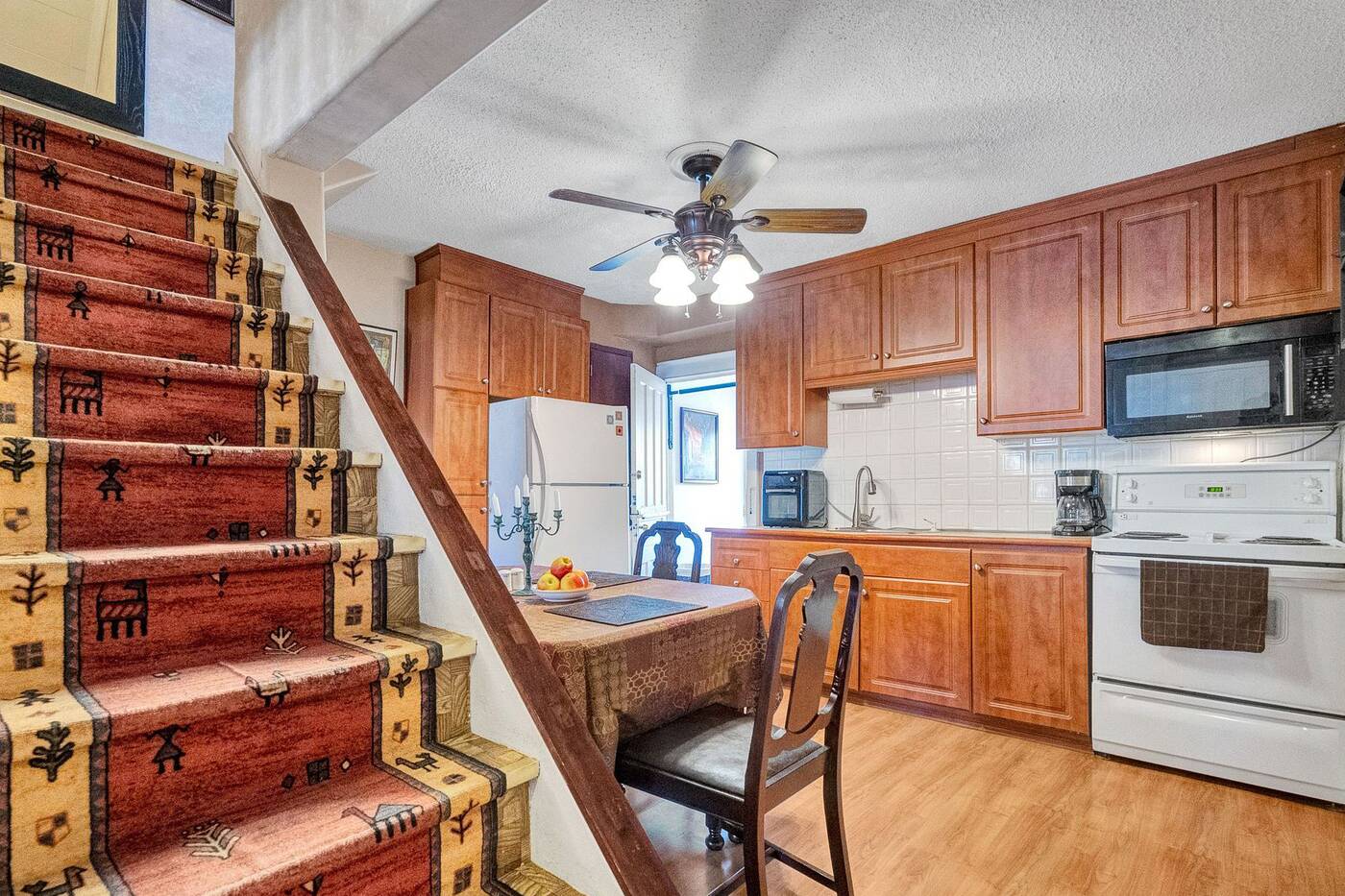

The kitchen.
But despite 39 Hartherley Rd. being a total throwback, this house is, as the listing says, “a diamond in the rough.”
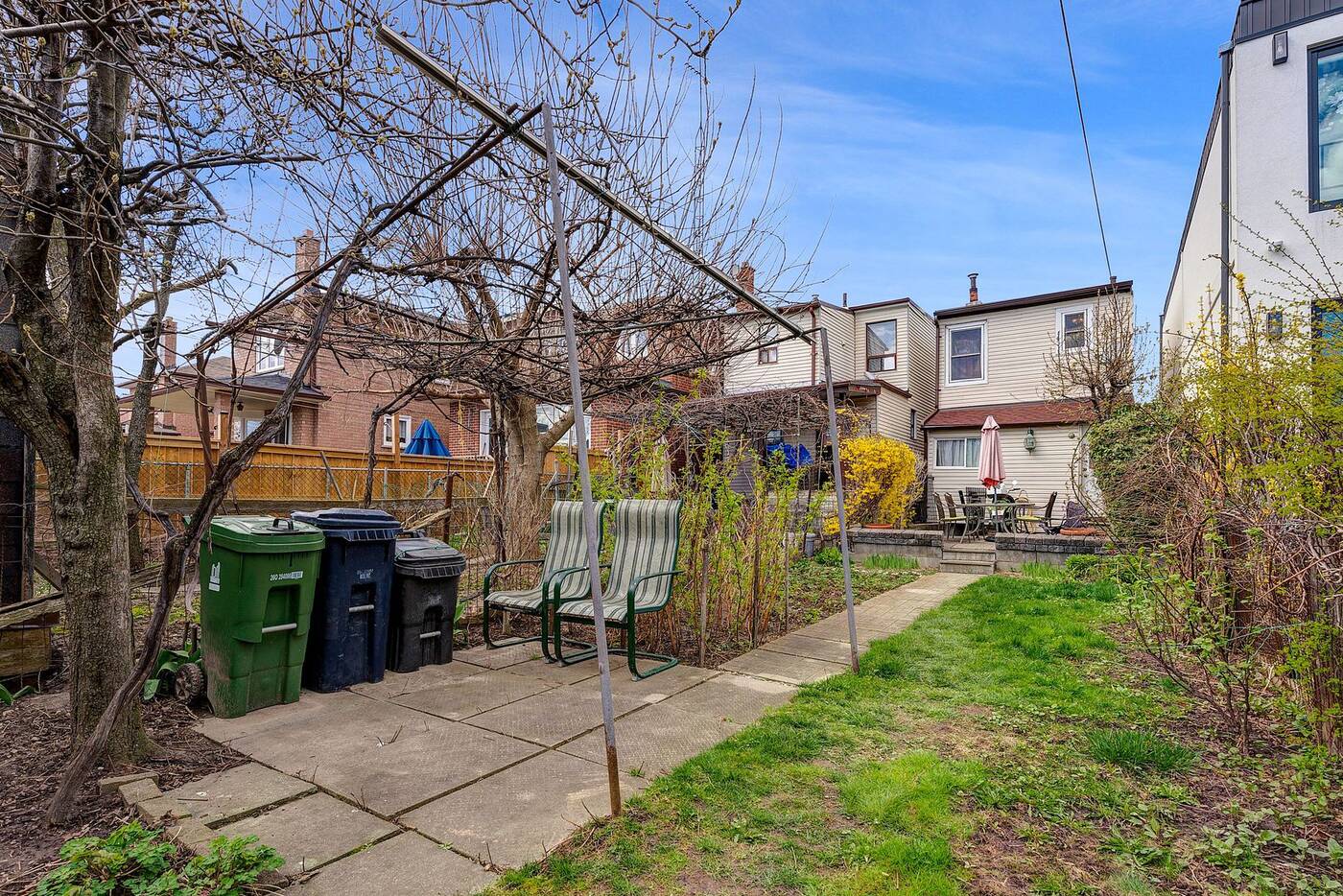

The backyard.
First off, it’s a detached house with a 125-foot deep lot in a good location.
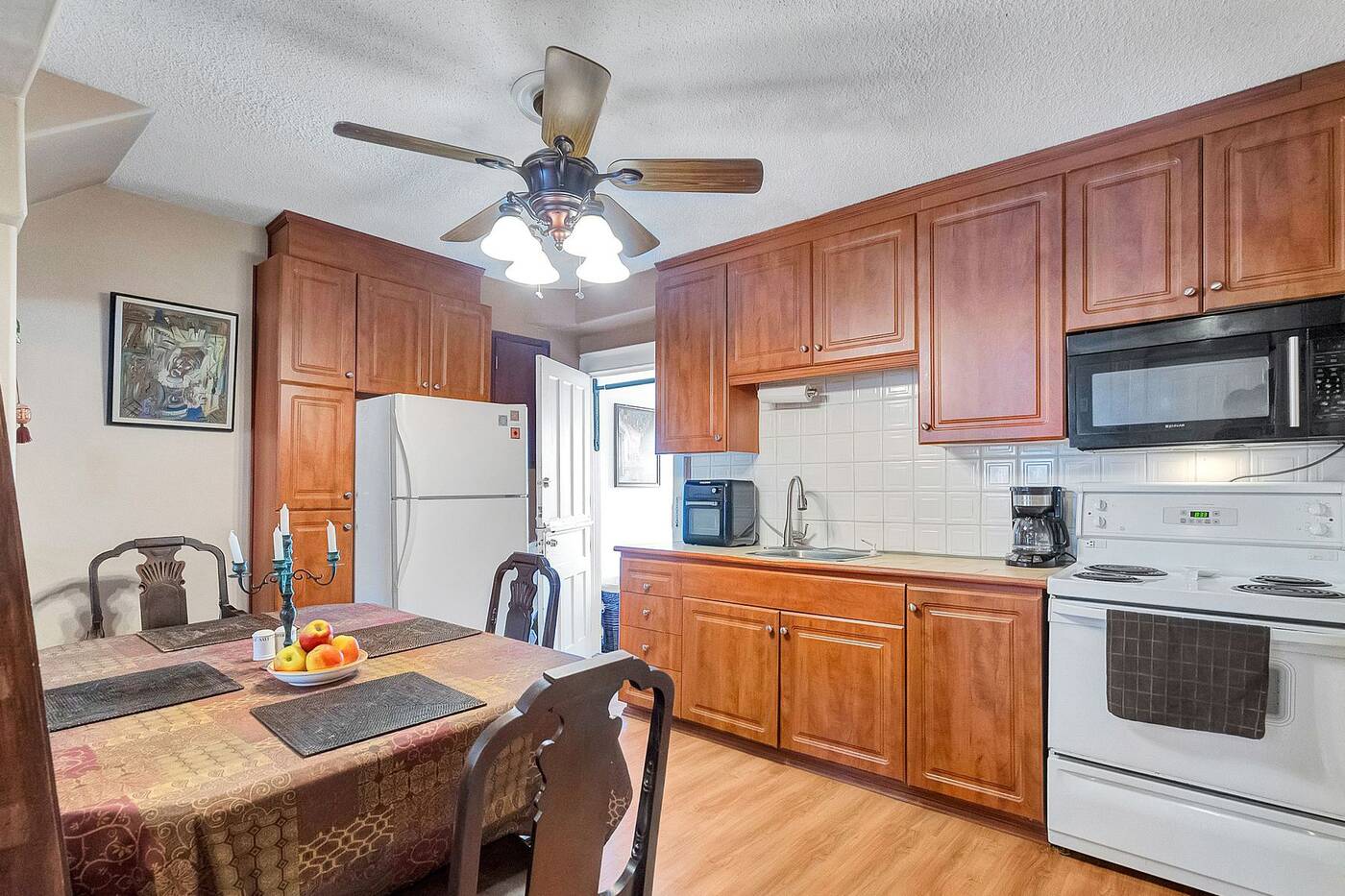

The kitchen has plenty of storage but, sadly, no dishwasher.
The main floor has a living room and kitchen with enough space for a dining table.
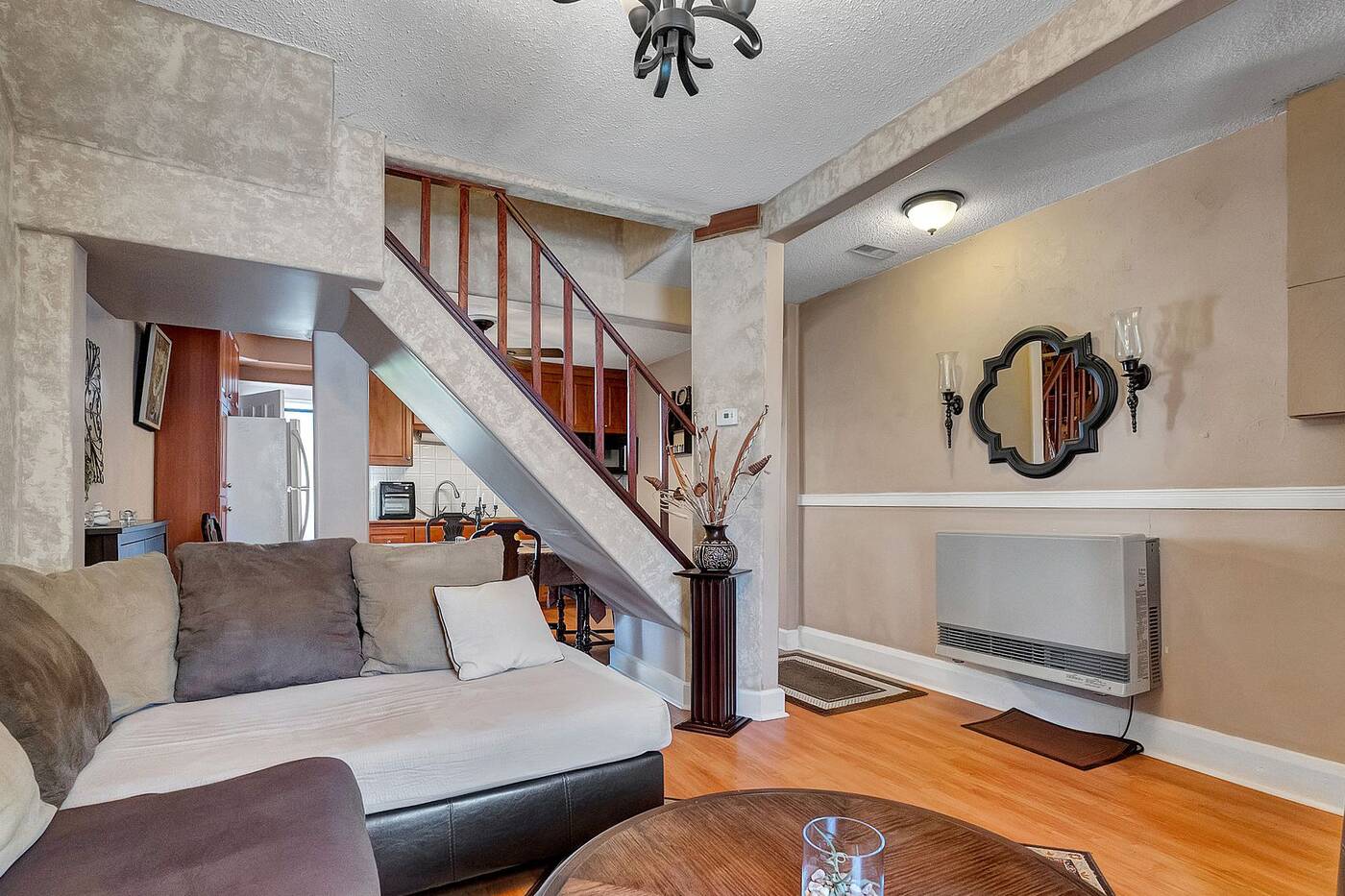

The main floor.
The layout is a bit awkward but the Dutch door off the kitchen is too cute.
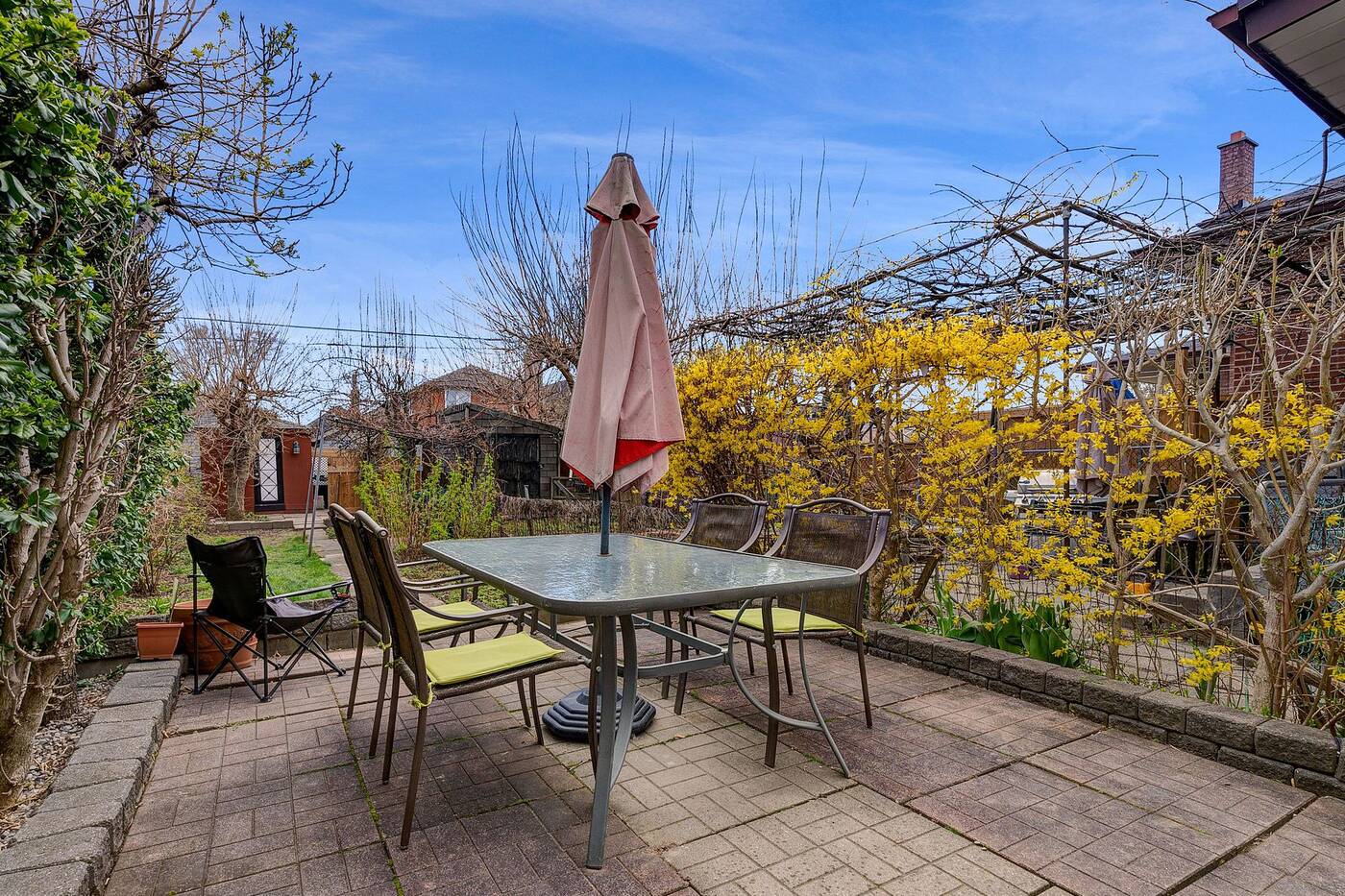

The back patio.
Off the kitchen is a laundry room/mud room that leads to the spacious backyard.
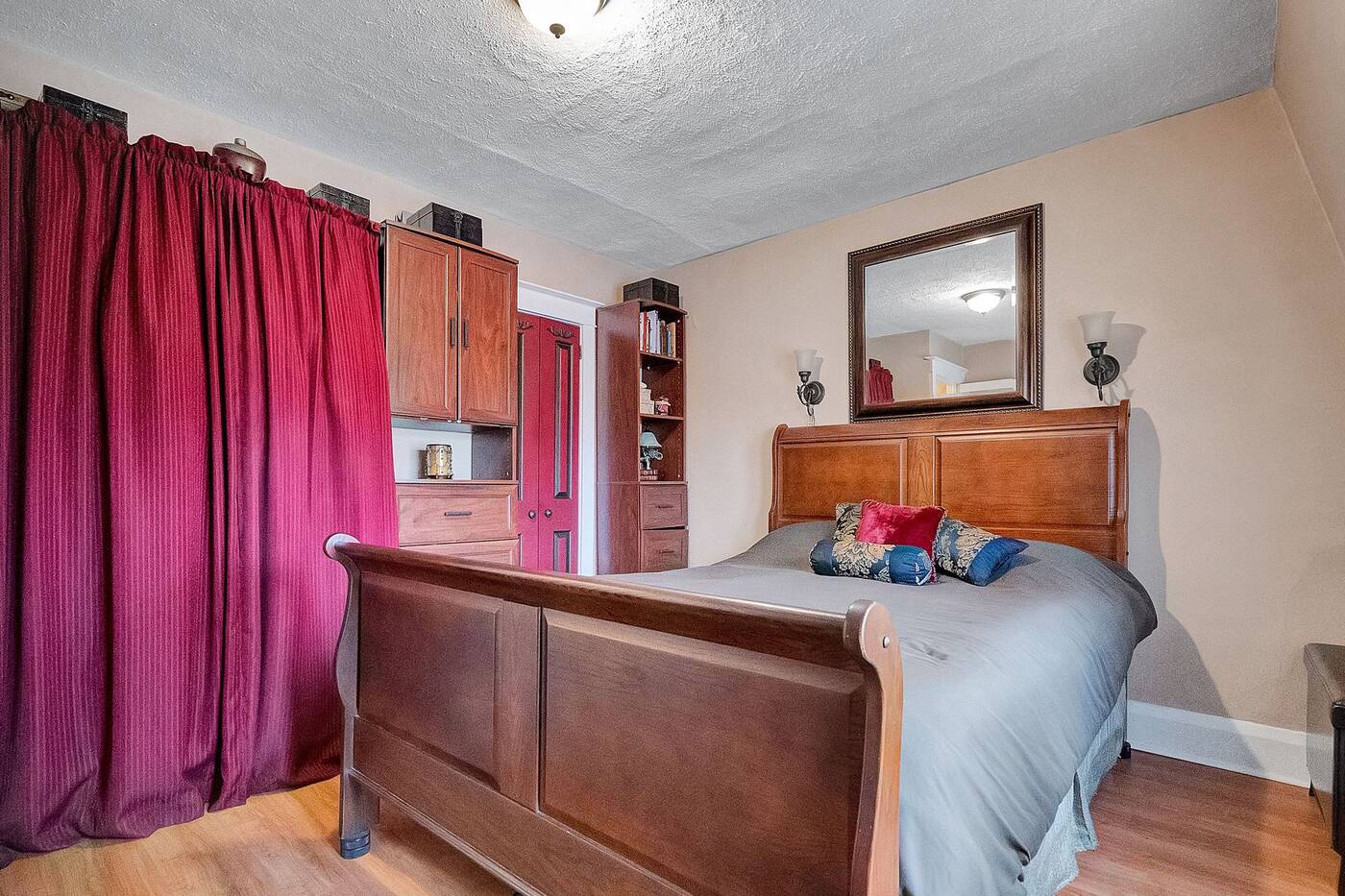

The primary bedroom.
Upstairs, there are two decently sized rooms and a small bathroom.
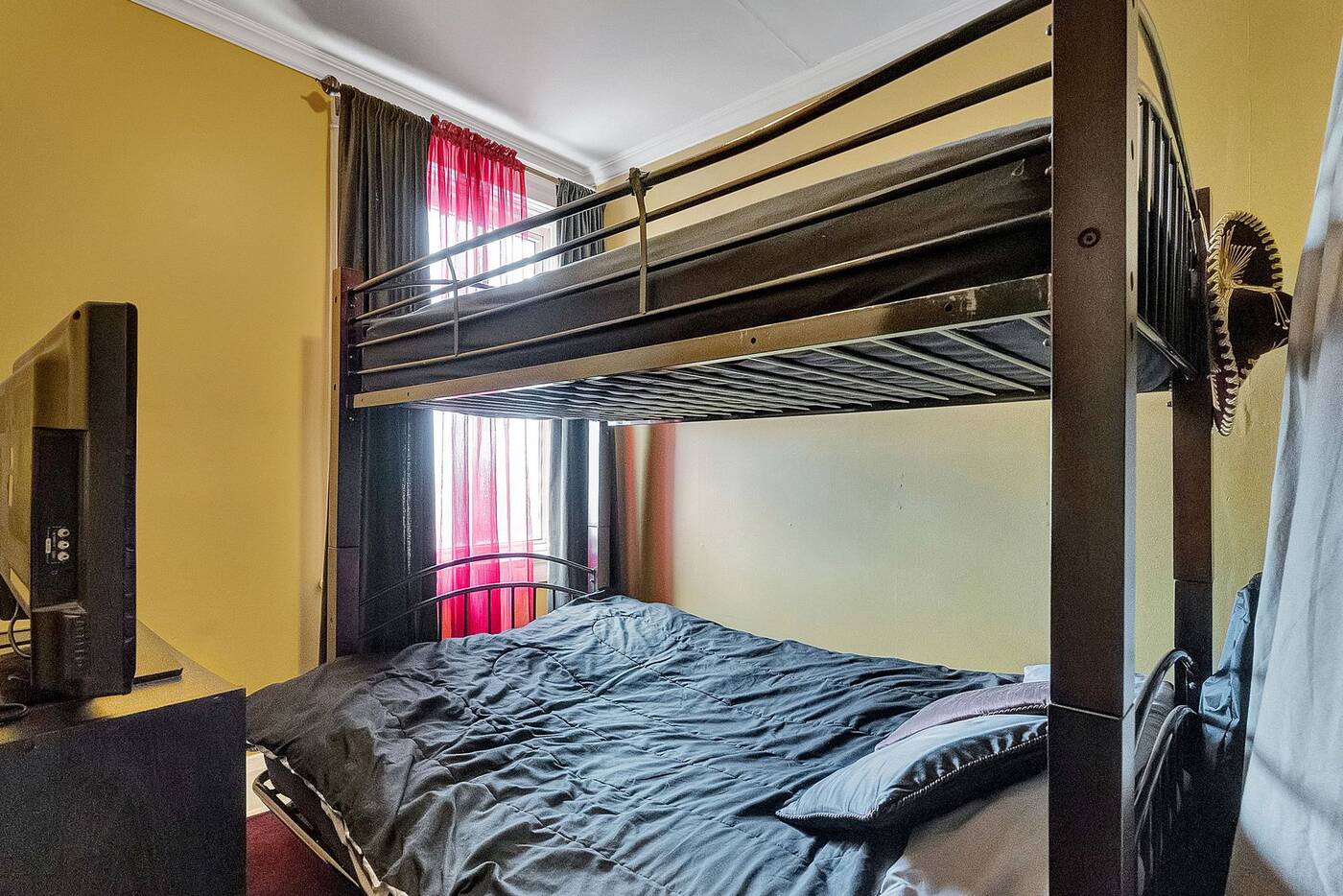

The second bedroom.
The house definitely needs some updating but the roof was done in 2015, the furnace is only a few years old, the electrical has been updated, and there’s room for expansion.
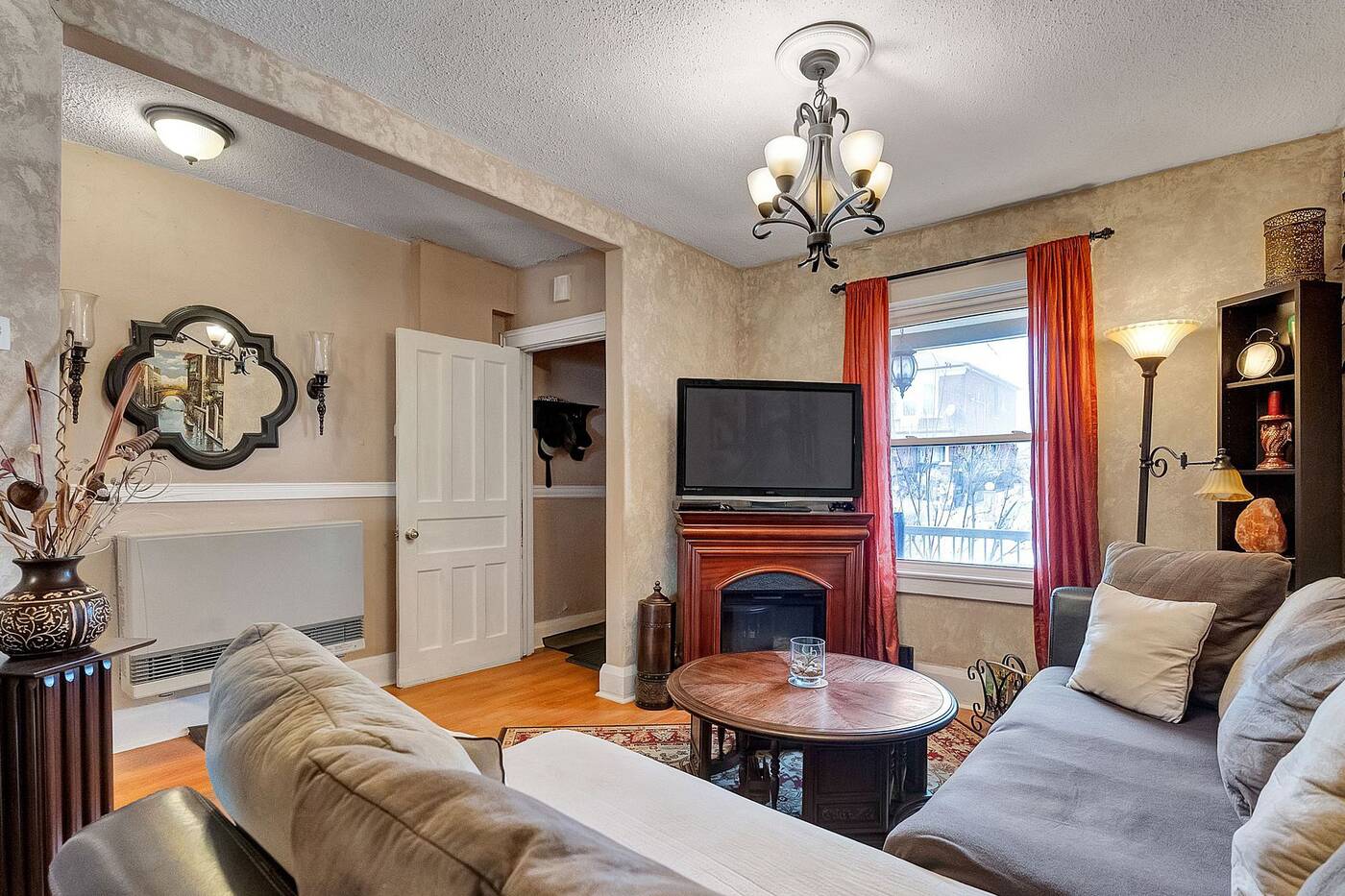

A fireplace in the living room.
Also, a coat of paint will do wonders to brighten up the all-beige ’90s aesthetic.
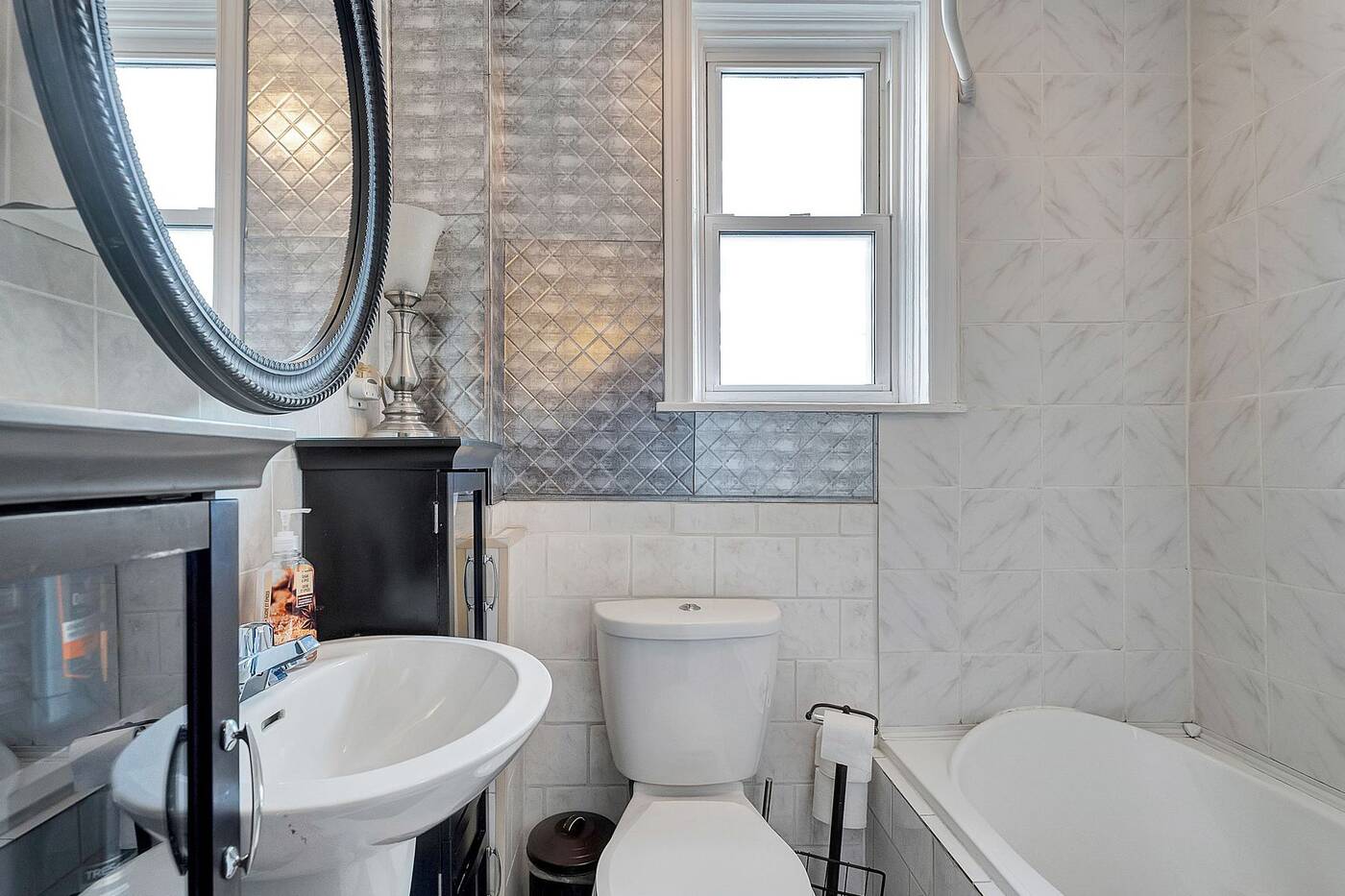

The small bathroom.
However, the biggest selling point of this home is the price point.
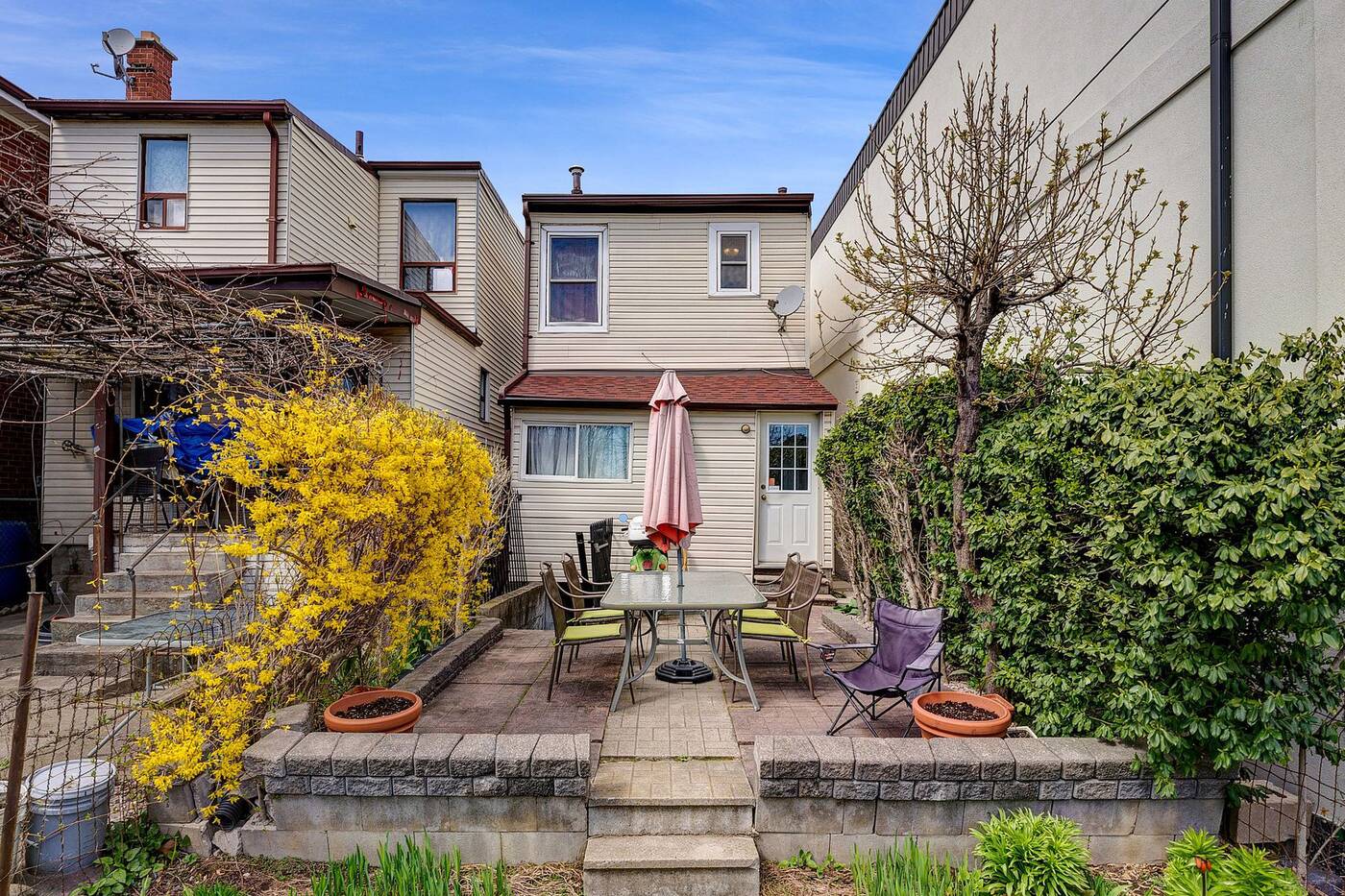

The back of the house.
39 Hatherley Rd. is listed for only $599,999, which is almost unheard of in Toronto, even if this place will probably go for closer to $700K.





-



 Health14 hours ago
Health14 hours agoRemnants of bird flu virus found in pasteurized milk, FDA says
-
Art20 hours ago
Mayor's youth advisory council seeks submissions for art gala – SooToday
-



 Health18 hours ago
Health18 hours agoBird flu virus found in grocery milk as officials say supply still safe
-



 Investment18 hours ago
Investment18 hours agoTaxes should not wag the tail of the investment dog, but that’s what Trudeau wants
-
News18 hours ago
Peel police chief met Sri Lankan officer a court says ‘participated’ in torture – Global News
-



 Science22 hours ago
Science22 hours agoiN PHOTOS: Nature lovers celebrate flora, fauna for Earth Day in Kamloops, Okanagan | iNFOnews | Thompson-Okanagan's News Source – iNFOnews
-
Art19 hours ago
An exhibition with a cause: Montreal's 'Art by the Water' celebrates 15 years – CityNews Montreal
-
Media13 hours ago
Vaughn Palmer: B.C. premier gives social media giants another chance




